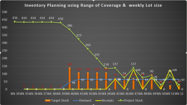SAP MRP
Filter By
Browse By
- SAP Analytics and AI
- SAP Application Development and Integration
- All SAP Application Development and Integration
- SAP ABAP
- SAP ABAP Development Tools
- SAP ABAP Test Cockpit
- SAP API Management
- SAP BAPI
- SAP Basis
- SAP BRF
- SAP Business Application Studio
- SAP CMS
- SAP Design Studio
- SAP Development Tools
- SAP DevOps
- SAP EAI
- SAP EDI
- SAP Extension Suite
- SAP Fiori
- SAP Fiori Elements
- SAP Integration Suite
- SAP Low Code Application Development
- SAP Low Code Automation
- SAP Netweaver
- SAP Release Management
- SAP UI5
- SAP Web Application Server
- SAP Web IDE
- SAP Business Process Management
- SAP Center of Excellence
- SAP CIO
- SAP Customer Experience
- SAP Data and Data Management
- All SAP Data and Data Management
- SAP BW
- SAP BW/4HANA
- SAP Crystal Reports
- SAP Data Archiving
- SAP Data Center
- SAP Data Governance
- SAP Data Integration
- SAP Data Migration
- SAP Data Quality
- SAP Data Services
- SAP Data Strategy
- SAP Data Visualization
- SAP Data Warehouse Cloud
- SAP DMS
- SAP Document Control
- SAP EIM
- SAP ETL
- SAP ETL Tools
- SAP HANA
- SAP HANA Administration
- SAP HANA Deployment Infrastructure
- SAP HANA Studio
- SAP Master Data
- SAP Master Data Governance
- SAP MDM
- SAP Enterprise Architect
- SAP Enterprise Asset Management
- SAP ERP
- SAP Finance
- All SAP Finance
- SAP Accounting
- SAP AR AP
- SAP Asset Accounting
- SAP Billing Systems
- SAP BPC
- SAP BRIM
- SAP Cash Management
- SAP Central Finance
- SAP Controlling
- SAP COPA
- SAP Cost Center Accounting
- SAP Currency Risk
- SAP e-invoicing
- SAP FICO
- SAP Finance Automation
- SAP Advanced Financial Closing
- SAP Financial Consolidation
- SAP Financial Planning
- SAP FX Risk
- SAP General Ledger
- SAP Global Tax Management
- SAP Hyperion
- SAP Order to Cash
- SAP Payment Processing
- SAP Profitability Analysis
- SAP Rebate Management
- SAP S/4HANA Finance
- SAP SWIFT Compliance
- SAP Treasury Management
- SAP Universal Journal
- SAP Governance Risk and Compliance
- SAP Human Capital Management
- SAP Intelligent Technologies
- SAP Platform and Technology
- All SAP Platform and Technology
- SAP Business Technology Platform
- SAP Cloud
- SAP Cloud Connector
- SAP Cloud Integration Platform
- SAP Cloud Migration
- SAP Cloud Platform
- SAP Cloud Providers
- SAP Cloud Strategy
- SAP Digital Signature
- SAP Container Platform
- SAP HANA Enterprise Cloud
- SAP Digital Asset Management
- SAP Smart Forms
- SAP HEC
- SAP Digital Integration Hub
- SAP Hyperscalers
- SAP Infrastructure
- SAP Messaging
- SAP Quality and Testing
- SAP Security
- SAP Spend Management
- SAP Supply Chain Management
- All SAP Supply Chain Management
- SAP APO
- SAP Asset Management
- SAP Business Network
- SAP Digital Manufacturing Cloud
- SAP Digital Twin
- SAP EWM
- SAP IBP
- SAP Inventory Management
- SAP Label Printing
- SAP Logistics
- SAP Manufacturing
- SAP Manufacturing Automation
- SAP MES
- SAP MII
- SAP MM
- SAP MRO
- SAP MRP
- SAP Order Management
- SAP Plant Maintenance
- SAP PLM
- SAP Production Planning
- SAP S&OP
- SAP SD
- SAP SPM
- SAP Supply Chain Planning
- SAP Track and Trace
- SAP Transportation Management
- SAP System Administration
Supply Chain Management: SAP MRP
In today’s digitally disrupted environment, planners are requested to check the feasibility of an uplifted product forecast based on time horizons. This feasibility check is carried out to determine the availability of capacity and supply to avoid out-of-stock situations and optimize sales. Therefore, putting customer service as the top focus and priority.
What Is SAP MRP?
SAP MRP (Material Requirements Planning) is a module in SAP ERP software. It is where production and procurement planners create feasible and realistic plans to initiate the procurement or production processes. Within SAP MRP, the system calculates the net requirements while considering available stock and scheduled receipts from purchasing and production. The planning run can be executed at a plant level or MRP-area level. The results of an MRP run are recommendations for creating documents to produce, purchase, or transfer the materials. The final step is to create the needed supply documents to meet that demand.
Supply Chain Management: SAP MRP
In today’s digitally disrupted environment, planners are requested to check the feasibility of an uplifted product forecast based on time horizons. This feasibility check is carried out to determine the availability of capacity and supply to avoid out-of-stock situations and optimize sales. Therefore, putting customer service as the top focus and priority.
What Is SAP MRP?
SAP MRP (Material Requirements Planning) is a module in SAP ERP software. It is where production and procurement planners create feasible and realistic plans to initiate the procurement or production processes. Within SAP MRP, the system calculates the net requirements while considering available stock and scheduled receipts from purchasing and production. The planning run can be executed at a plant level or MRP-area level. The results of an MRP run are recommendations for creating documents to produce, purchase, or transfer the materials. The final step is to create the needed supply documents to meet that demand.
What Is the Key to SAP MRP?
For complex products and higher production volumes, complex calculations are needed. Inventory is a major cost of doing business and one of the biggest factors in profitability and customer service. It is important early on to identify key personnel roles whose power base is affected by a new MRP system. The key to making an SAP MRP implementation successful is to provide extensive training and education for all affected employees.
Key business use cases for SAP MRP are:
- Product Promotion: The module can examine if it is feasible to produce the products per an increased demand forecast.
- Capacity Planning: Plan for extra staff, shifts, or additional capacity to prepare for an expected increase in production.
- Purchasing Decisions: Proactively identifies if you should renegotiate purchase contracts due to an increase in scale and identify new vendors to reduce costs. This can also help in creating visibility with supplier collaboration.
SAP MRP benefits come from improved production planning and scheduling processes. This brings faster response time per market changes, allowing a reduction in inventory without compromising customer service.
Technical resource partners for consideration might be – SAP, Opsveda or Tibco.
Further Insights for SAPinsiders
- Manage Material Requirements Planning Exception Messages in SAP. Venkata Ramana Nethi from Schlumberger offers insights to categorize and manage SAP MRP exceptions, because this can impact your operational performance relative to using KPI’s. Learn how to standardize your process and translate the messages into actions.
- Real-Time Supply Chain Planning with Demand-Driven MRP in SAP S/4HANA. Caetano Almeida, talks about DDMRP (Demand Driven MRP) SAP Fiori apps. The bullwhip effect is where inventory can move from being backordered to having excess. The DDMRP establishes buffers to absorb the demand variability and help stabilize the nervousness effect.
5 results
-

Manage Material Requirements Planning Exception Messages in SAP
Reading time: 12 mins
Exceptions generated via material requirement planning (MRP) on the MRP elements should be evaluated daily or, at a minimum, weekly. Managing MRP exception messages effectively at the operational level is an essential business activity because these messages impact operational key performance indicators (KPI). Depending on the organization size and product volumes there could be hundreds…
-

Dynamic Safety Stock Management: How to interpret MRP results of coverage profiles
Reading time: 6 mins
by Venkata Ramana Nethi CSCP, CPIM, Business Process Lead – Operations, Schlumberger Overview: An organization’s strategic inventory policy and stocking strategies drive aggregate level inventory management (i.e., ABC/XYZ/LMN, etc. classification) which in turn drives item level inventory management. One of the most effective ways to perform item level inventory management on high volume and low...…
-

- SAP MRP
 Premium
Premium
Implementing the Simplified Subcontracting Process with MRP Areas in SAP S/4HANA
Reading time: 7 mins
Learn the changes and simplifications in the subcontracting process introduced with SAP S/4HANA and how to effectively implement it in SAP S/4HANA. Key Concept SAP S/4HANA introduced major simplifications in production planning, including changes in the subcontracting process. The subcontracting scenario has been simplified in SAP S/4HANA, and now SAP recommends the use of subcontracting...…
-
-

- SAP MRP
 Premium
Premium
Real-Time Supply Chain Planning with Demand-Driven MRP in SAP S/4HANA
Reading time: 11 mins
Learn how to use the new demand-driven material requirements planning (DDMRP) method to decouple the lead time. It minimizes the bullwhip effect to achieve real-time supply chain planning in SAP S/4HANA. Key Concept The demand-driven material requirements planning (DDMRP) concept was introduced in SAP S/4 HANA 1709. DDMRP is a new planning method introduced by...…
-

Before You Go Live, Maximize the Benefit from Your MRP Output
Reading time: 3 mins
In a brief interview at SCM 2017, Beverly Desjardins, solution architect at itelligence North America, answered some questions related to her session on how to use material requirements planning (MRP) results to improve the stability of your system. Membership Required You must be a member to access this content.View Membership LevelsAlready a member? Log in…
Become a Member
Unlimited access to thousands of resources for SAP-specific expertise that can only be found here.
Become a Partner
Access exclusive SAP insights, expert marketing strategies, and high-value services including research reports, webinars, and buyers' guides, all designed to boost your campaign ROI by up to 50% within the SAP ecosystem.
Upcoming Events
Related Vendors
Your request has been successfully sent


